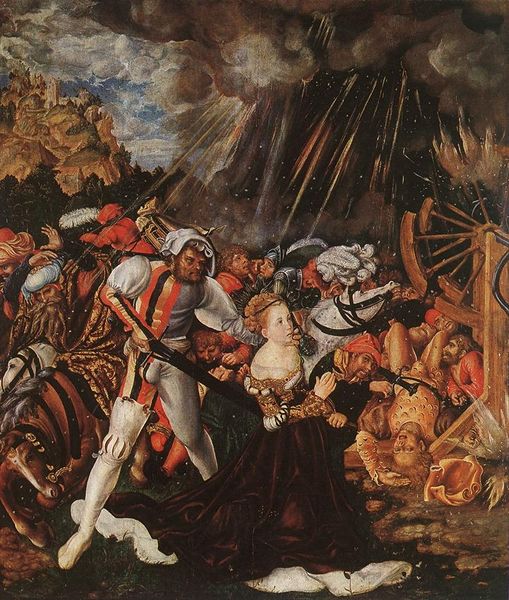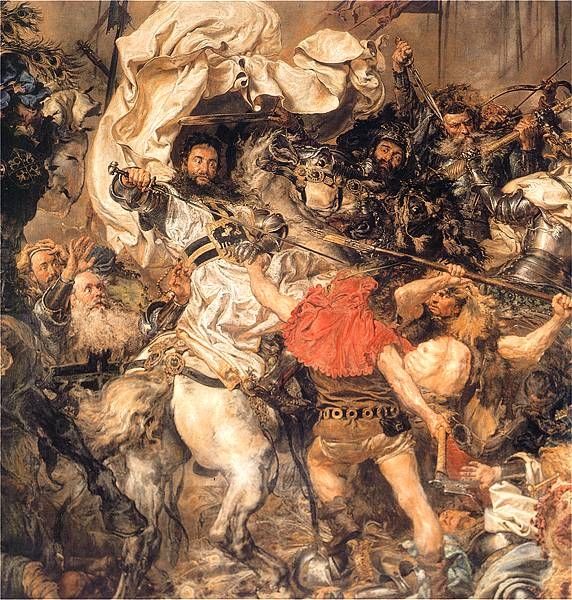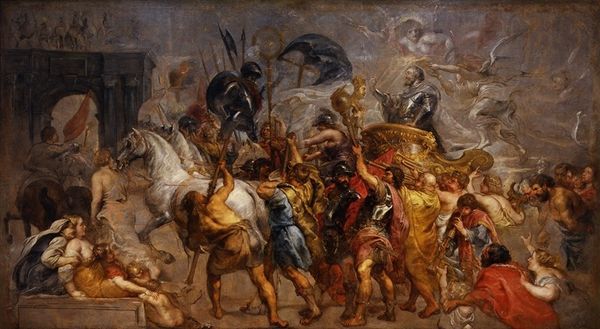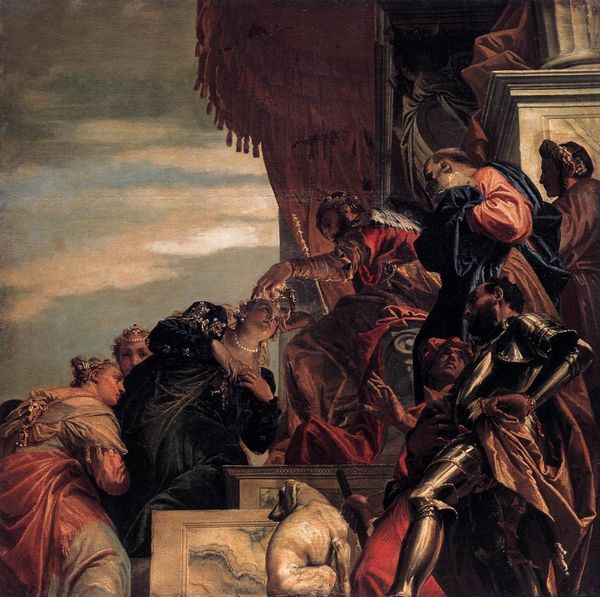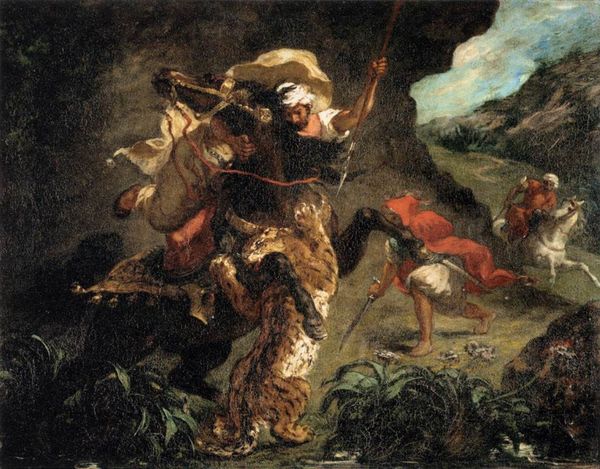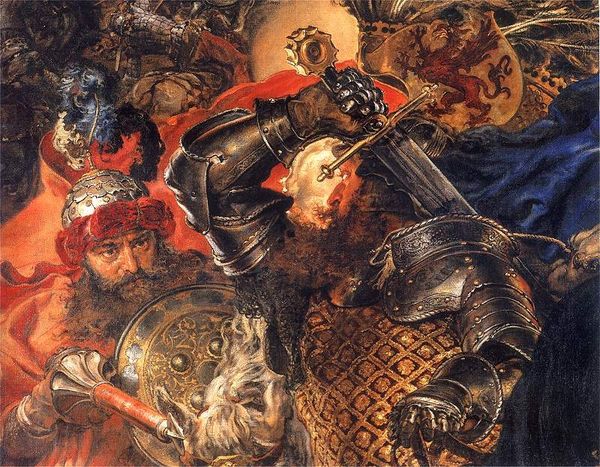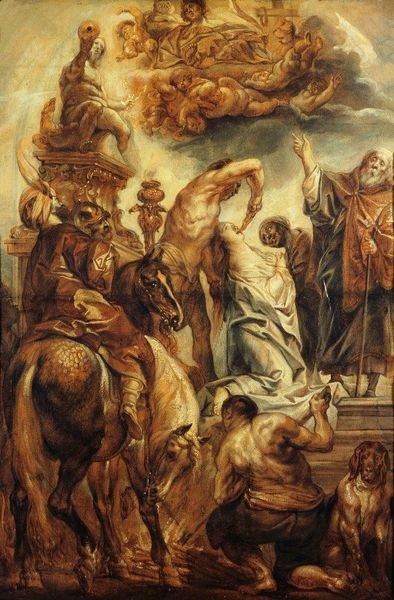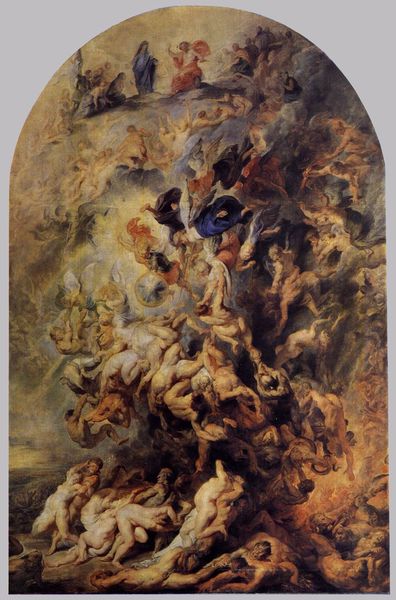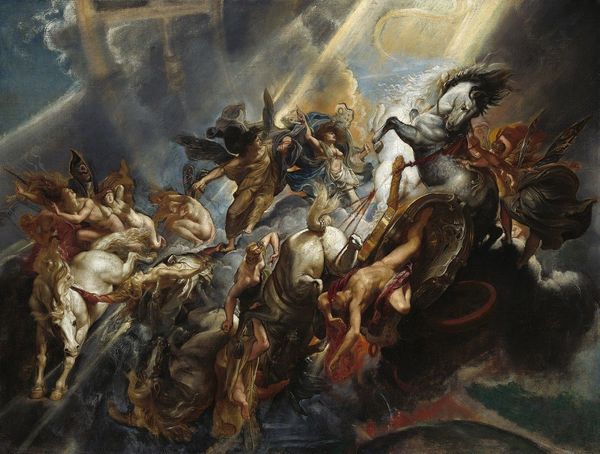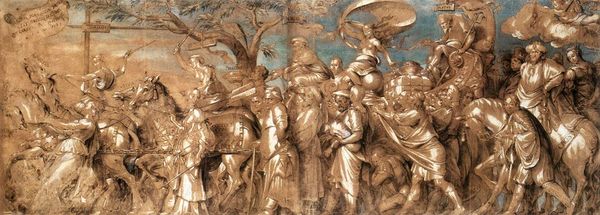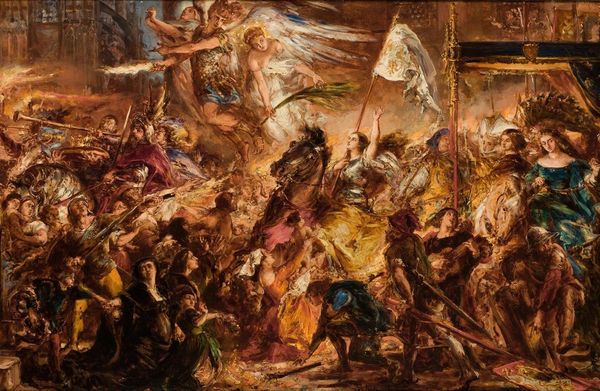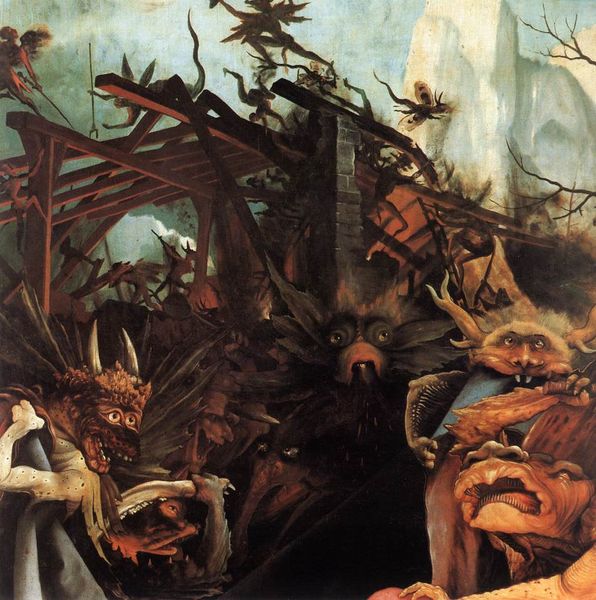
painting, oil-paint
#
narrative-art
#
painting
#
oil-paint
#
war
#
expressionism
#
history-painting
#
academic-art
#
expressionist
#
realism
Copyright: Public domain
Curator: This is a section of Jan Matejko's massive oil painting, "Battle of Grunwald." Editor: My immediate reaction is that of a brutal and chaotic mess. There is no discernible order—just an overwhelming density of bodies, weapons, and... agony, rendered with such vivid colors, and the texture... wow. Curator: Matejko worked in a period that greatly emphasized realism in its artistic output; but he infused it here with some rather expressionistic elements, particularly around capturing the turmoil of warfare. The source, of course, is historical. This work depicts a pivotal moment in Polish history, the Battle of Grunwald where the Polish-Lithuanian alliance decisively defeated the Teutonic Order. But let’s talk about the process, the layers of oil paint—likely commissioned by a wealthy patron interested in solidifying a very specific and biased narrative about this historic event. The materials themselves became instruments in forging national identity. Editor: Looking more closely, there’s this deliberate composition, and not a spontaneous record, a very deliberate build-up of depth using light and shadow, like, note how the faces emerging from the darker background pull you right into the heart of it. Do you feel the semiotics work, the almost overloaded symbols in clothing and weaponry. The picture tells a story. It even features historical figures amidst this melee. The way light is used isn’t naturalistic, right, it is designed. Curator: Certainly. What strikes me, beyond the visual drama, is the sheer scale of production behind this artwork, I mean, the amount of labor, not just Matejko himself. Think of the workshops that made his paint brushes, processed the linseed oil, stretched and primed the canvas, it is important to acknowledge a host of contributors when assessing an artwork like this. And it speaks to a desire by those who commissioned the work, in all the distribution channels, to convey and promote a specific, nationalistic idea that served contemporary, social interests. Editor: All so valid, of course, and, seeing past the subject matter, I am now getting lost in his clever construction of this multi-layered vista, how color isn’t merely representative but also expressive... you almost start forgetting what the actual event must have looked like. And you admire, at least I do, Matejko’s skillful choreography, that makes sure you understand that even horror can still have its formal perfection. Curator: I see the work, then, more of an effective symbol of how art became another vehicle of constructing histories... Editor: And I observe a grand arrangement of light, color, form and composition. A dance. Thank you for offering me an introduction into how this scene achieves this level of depth of drama.
Comments
No comments
Be the first to comment and join the conversation on the ultimate creative platform.
